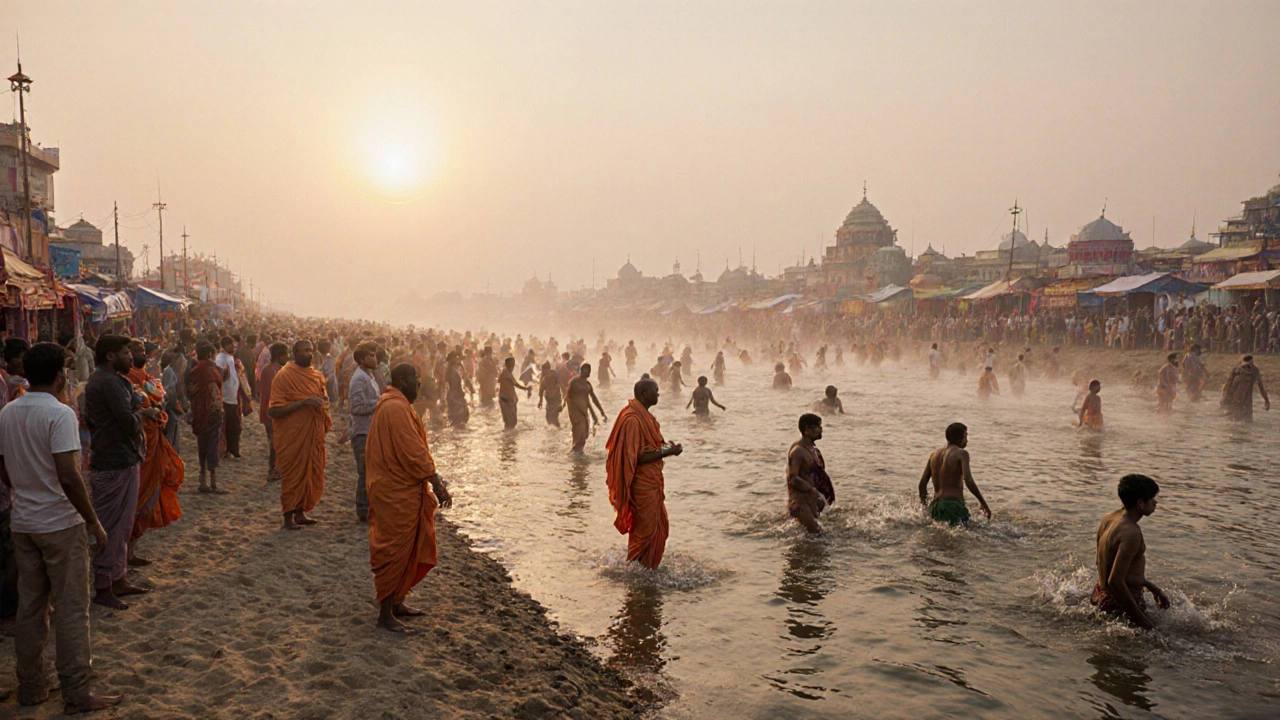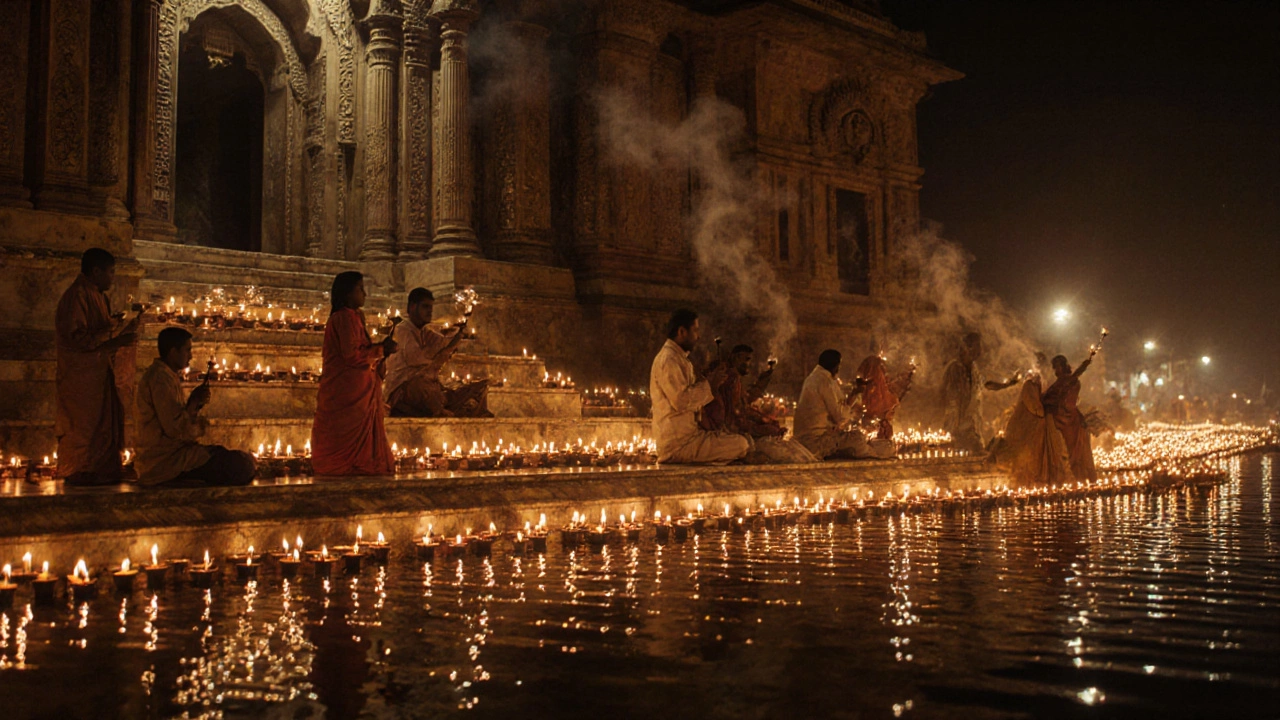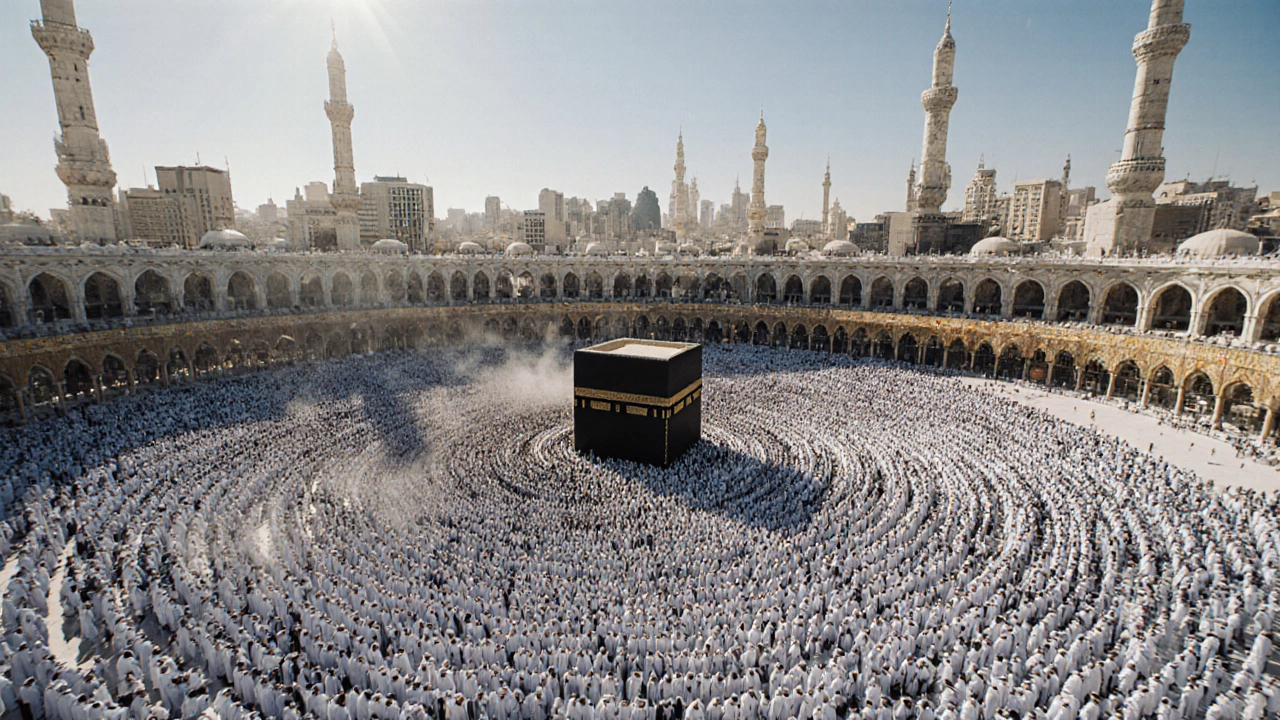Which is the best religious festival in the world? Top spiritual events that draw millions

- Oct, 30 2025
- 0 Comments
- Aaron Blackwood
Religious Festival Comparison Tool
Which Festival is Right for You?
Select your top priority to find your ideal religious festival experience
There’s no single answer to which religious festival is the best in the world - because "best" depends on what you’re looking for. Is it scale? Spiritual depth? Cultural intensity? For millions of pilgrims, the answer isn’t about ranking - it’s about being there. But if you’ve ever wondered which festival draws the most people, moves the most hearts, or changes lives in ways no other event can, then you’re not alone.
The Kumbh Mela: Where the river becomes a temple
The Kumbh Mela in India isn’t just a festival. It’s a moving city of faith. In 2019, over 150 million people gathered along the Ganges in Prayagraj over 55 days. That’s more than the entire population of Canada. Imagine a temporary metropolis with no streets, no skyscrapers - just sand, sacred rivers, and millions of barefoot pilgrims walking into the water at dawn to wash away their sins. No tickets. No queues. Just devotion.
It happens every three years, rotating between Prayagraj, Haridwar, Nashik, and Ujjain. The Maha Kumbh, the grandest version, comes once every 144 years. The last one was in 2013 in Allahabad (now Prayagraj). The next full Maha Kumbh isn’t until 2165. If you want to witness the largest human gathering on Earth, you need to plan ahead - not just for travel, but for the sheer weight of it all.
Why does it matter for temple tours in India? Because the Kumbh Mela isn’t separate from temple culture - it’s the living heart of it. Pilgrims come from temples across the country, carrying idols, chanting mantras, and sleeping under the same stars as sadhus who’ve renounced everything. It’s not a show. It’s a surrender.
Diwali: Light in the darkest time
If Kumbh Mela is about mass surrender, Diwali is about personal renewal. Known as the Festival of Lights, Diwali lights up homes, streets, and temples across India and beyond. In 2025, it falls on October 31 - just one day after today. Millions light oil lamps, burst firecrackers, and offer prayers to Lakshmi, the goddess of wealth and prosperity.
But Diwali isn’t just about money. In many parts of India, it marks the return of Lord Rama after 14 years of exile. In Gujarat, it’s the start of the new year. In Bengal, it honors Kali. In temples like Varanasi’s Kashi Vishwanath or Jaipur’s Jal Mahal, the rituals are ancient, quiet, and deeply personal. You won’t find crowds here like at Kumbh - but you’ll find something quieter: a sense of peace.
For temple tour visitors, Diwali transforms sacred spaces. Temples glow with thousands of diyas. The air smells of incense and sweets. Priests chant all night. Even non-Hindus are welcome to sit quietly, watch the lights, and feel the shift in energy. It’s not about conversion. It’s about connection.
Hajj: The pilgrimage that reshapes identity
Every year, more than two million Muslims from every corner of the globe converge on Mecca for Hajj. It’s one of the Five Pillars of Islam. Every able-bodied Muslim who can afford it must make this journey at least once. And when they do, they don’t just visit a holy site - they become someone else.
Wearing simple white garments called ihram, men and women from CEOs to farmers, from Nigeria to Indonesia, walk together in perfect equality. They circle the Kaaba seven times. They run between hills. They stand on the plains of Arafat, praying for forgiveness. There are no VIPs. No cameras allowed in the sacred zones. Just humans, barefoot, under the sun, calling out to God.
For travelers from India, Hajj is deeply tied to history. Many Indian Muslims trace their lineage to early converts in the 7th century. Cities like Hyderabad, Lucknow, and Delhi have long-standing traditions of sending pilgrims to Mecca. Temple tours in India often include visits to historic mosques like the Jama Masjid in Delhi or the Haji Ali Dargah in Mumbai - places that echo the same devotion you’ll find in Mecca.

Other festivals that move the world
Not every major religious event happens in India. The Vatican’s Easter Mass draws over 100,000 people. The Sikh festival of Vaisakhi in Punjab sees crowds of over 500,000. The Buddhist festival of Vesak in Sri Lanka and Nepal brings monks and laypeople together to meditate under the Bodhi tree. In Tibet, the Monlam Prayer Festival draws thousands to Lhasa’s Jokhang Temple.
But what makes these different from the top three? Scale. Duration. Transformation. Kumbh Mela, Diwali, and Hajj aren’t just events - they’re life-altering experiences. You don’t just watch them. You feel them in your bones.
What makes a religious festival "best"?
There’s no official list. No Nobel Prize for the most spiritual gathering. But if you ask someone who’s been to all three - Kumbh Mela, Diwali, and Hajj - they’ll tell you this: the "best" festival is the one that changes you.
Kumbh Mela teaches you about surrender. Diwali reminds you that light returns, no matter how dark things seem. Hajj shows you that no matter your skin, language, or wealth, you’re the same under God.
For temple tour travelers, these aren’t just photo ops. They’re invitations. To step outside your routine. To sit in silence with strangers who feel the same thing you do. To touch something older than nations, borders, or even religions.

Planning your pilgrimage
If you’re thinking of joining one of these festivals, here’s what you need to know:
- Kumbh Mela: Go in January or February for the most sacred dips. Bring warm clothes, a sleeping mat, and patience. Accommodations fill up months ahead. Book through registered tour operators - avoid street touts.
- Diwali: Visit Varanasi, Jaipur, or Udaipur. Stay in heritage havelis. Book early. Expect road closures and limited transport. Participate in the evening aarti at temples - it’s free and unforgettable.
- Hajj: Only Muslims can enter Mecca. Non-Muslims can visit the nearby city of Jeddah and explore historic mosques in India like the Qutub Minar complex or the Taj Mahal (which was built by a Muslim emperor who honored Hindu traditions too).
For temple tour enthusiasts, these festivals aren’t distractions from sacred sites - they’re the reason the sites exist. Temples are anchors. Festivals are the tides that bring people back to them, again and again, across centuries.
Final thought: It’s not about competition
There’s no crown for the "best" religious festival. But if you’re looking for a moment that will stay with you longer than any vacation, any museum, any five-star hotel - then go where the people are. Go where the earth shakes under millions of feet. Go where silence is louder than any chant.
One day, you’ll remember the light. The smell of incense. The sound of a thousand voices saying the same prayer. And you’ll know - you didn’t just visit a festival. You became part of something that’s been happening since before history was written.
Is the Kumbh Mela the largest human gathering on Earth?
Yes. The 2019 Kumbh Mela in Prayagraj saw an estimated 150 million visitors over 55 days, making it the largest peaceful gathering in human history. That’s more than the combined populations of Canada, Australia, and New Zealand. No other event - not a concert, sports final, or political rally - comes close in scale.
Can non-Hindus attend Diwali celebrations at temples?
Absolutely. While Diwali is a Hindu festival, temples in India welcome everyone. Many temples, like the ISKCON temples in Delhi and Bangalore, hold open aartis and light displays for visitors of all faiths. You can sit quietly, watch the lamps, and even accept prasad (blessed food). There’s no pressure to convert - just an invitation to witness joy.
Do I need to be Muslim to go on Hajj?
Yes. Hajj is a religious obligation for Muslims only. Non-Muslims are not permitted to enter the holy cities of Mecca and Medina. However, non-Muslim travelers can visit other historic Islamic sites in India, such as the Jama Masjid in Delhi or the Ajmer Sharif Dargah, which are open to all and deeply connected to India’s spiritual heritage.
Which is better for temple tours: Kumbh Mela or Diwali?
It depends on what you want. Kumbh Mela is overwhelming - massive crowds, raw energy, and a sense of collective surrender. Diwali is intimate - glowing temples, quiet rituals, and personal reflection. For first-time visitors to India, Diwali is easier to navigate. For those seeking deep spiritual immersion, Kumbh Mela is unmatched.
Are these festivals safe for solo travelers?
Yes, with preparation. Kumbh Mela has a massive security presence and organized zones for tourists. Diwali is generally very safe in tourist areas like Jaipur and Udaipur. For Hajj, non-Muslims can’t enter, but Indian Muslim pilgrims often travel in groups with guides. Always book through reputable operators, carry ID, and avoid unlicensed vendors. Thousands of solo travelers attend these festivals each year - safely.